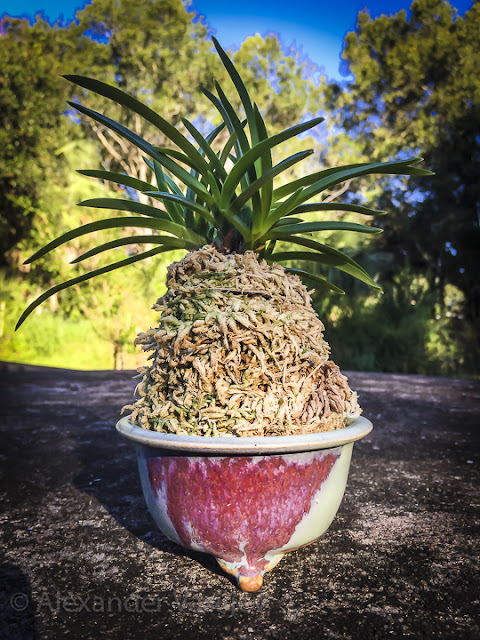I re-mossed my entire collection in the beginning of October in preparation for their rest. Since then their roots and leaves growing have been slowing down for the most part. My FUUKIRAN are entering hibernation. The night temperatures now have established in their 60s (60F / 15C) and soon will start to deep into low 50s (50F / 10C), as an average.
It is usually the coldest month, when FUUKIRAN rest, during December-January-February and into March. Watering must be reduced to every 5-10 days and the light intensity is lowered too.
It seems that here in Florida my FUUKIRAN, so far, are following their natural growth cycle:
December/January/February/March - hibernation
March/April - beginning growth
May/June/July - active growth
July/August - rest
August/September/October - growth
October/November - preparation for hibernation
Blooming occurs from late spring to June/July and may repeat August/September/October.
 |
| Neofinetia falcata 'Shoujou' 猩々 in the fall, with five new growth developed this year. |







